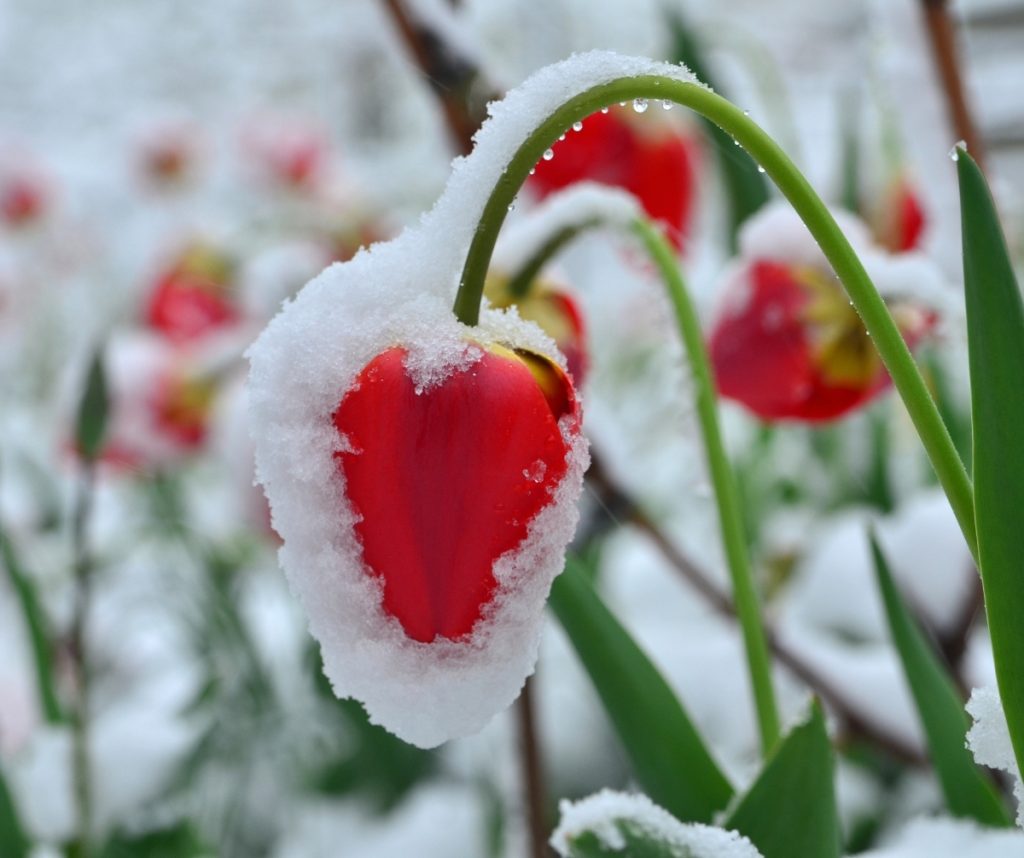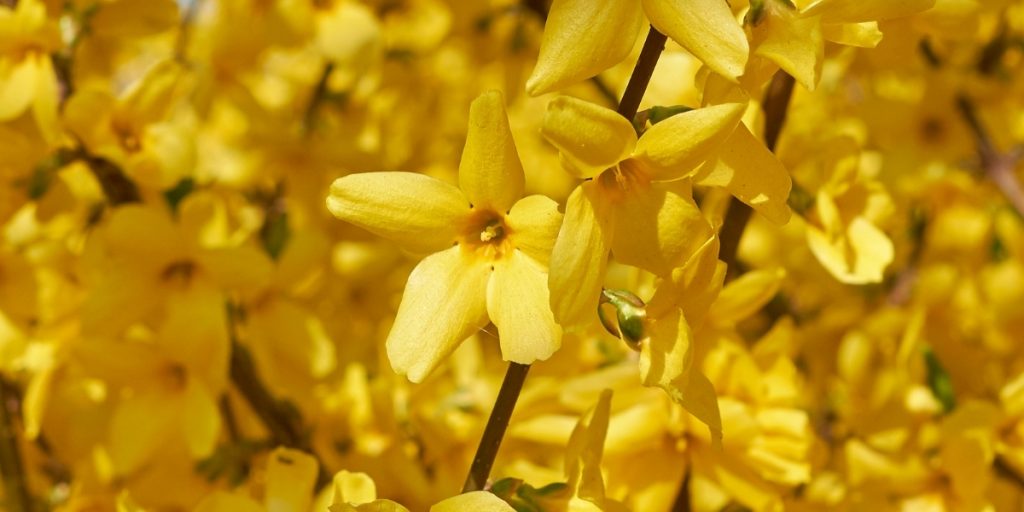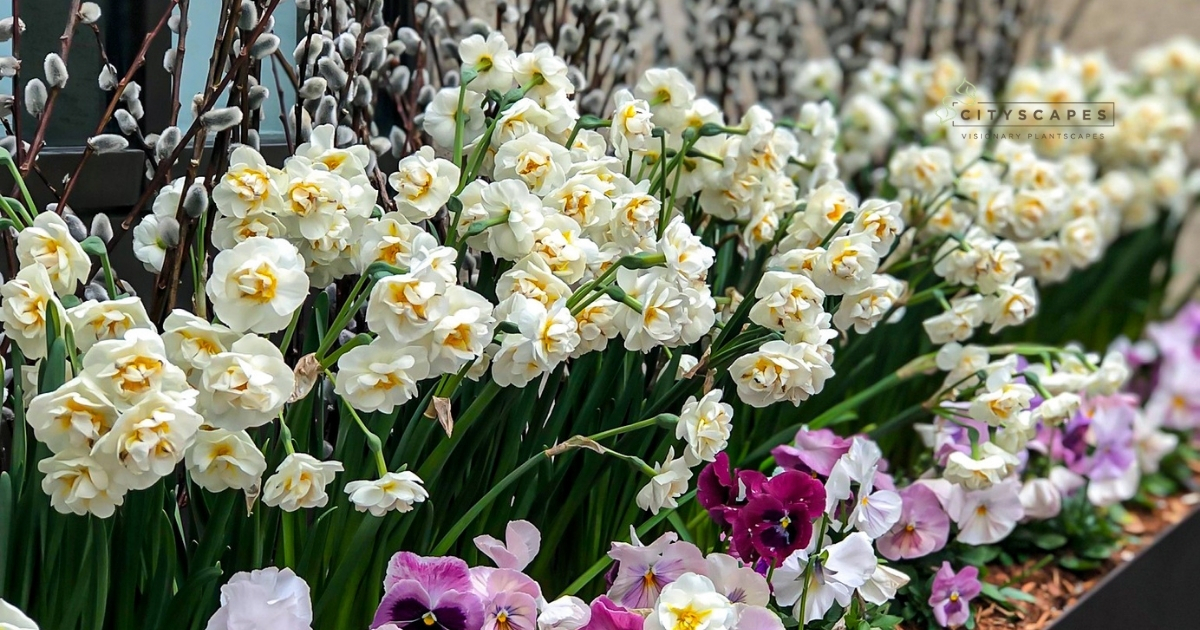How to design beautiful plantscapes during our most unpredictable season.

We recently had our first bout of mild weather in Eastern Massachusetts. Snow stuck around for longer this year than in previous years. We are starting to see the last of it melt away. Birds are chirping and soon, shoots will be sprouting up with buds that are ready to push out from their stems, longing to burst and bloom! Before you know it, we’ll set the clocks forward, and we’ll break out the rakes and gardening gloves. It will be time to get started on Spring Planting in New England. By mid-April, our team will be busy removing debris, planting spring flowers, and mulching away. With a bit of warm sun and seasonal rains, those plants will be established and flourishing in no time.
We’re not going to sugarcoat it though, we’re in New England!
We will have a day in March that pushes towards 80 degrees, and we will place money on a small snowstorm in April. It happens, and it’s part of the magic in this area that we call home. Our unpredictable weather is a challenge that Northeastern plantscapers and gardeners welcome. We find pride in our ability to adapt to any and all weather conditions. Take a look at these tips for spring planting in New England to help you get through the unpredictable weeks ahead.
“Incorporate natural elements that won’t succumb to frost.”
Incorporate natural elements that won’t succumb to frost. We are a huge fan of pussy willow branches. We start getting these beautiful branches in February out of Canada. Come March and April we get them locally. You can find these in nature around here, budding at the same time. These branches of fluffy joy are reminiscent of new growth and as soft as seasonally appropriate bunnies! They add height and texture to exterior landscapes and containers that you can’t get from other plants at that time.
Forsythia is another early flowering shrub that we love to incorporate into our early spring plantings. They provide a huge pop of color with their bright yellow blooms that can be seen from afar. Once the flowers pass, they leaf out and provide bright green foliage to extend the season until summer plantings come.

“In spring, one has to find tougher blooms that can stand up and hold their brilliant shape and color in the threat of a temperature drop.”
What communicates life and new opportunity better than blooms? We rotate annuals throughout our seasonal plantscaping. In spring, one must find tougher blooms that can stand up and hold their brilliant shape and color in the threat of a temperature drop. They are fairly inexpensive, and we can swap them out with ease when needed. Pansies, lamium, viola, daffodils, and tulips are our favorites.
“Plantscapers and gardeners must do their part to keep the natural environment healthy and thriving!”
Love ‘em or hate ‘em, ivy thrives in Boston, just take a stroll through Harvard Square, Beacon Hill, or Back Bay. English and Boston varieties can handle hardiness zones 4-9, and our area in southern New England sits comfortably in the 6-7 zone. Note that ivies are extremely invasive and aggressive. Therefore, Cityscapes, we are ultra-cautious in making sure these Ivy’s stay contained and don’t spread past their containers and beds. Plantscapers and gardeners must do their part to keep the natural environment healthy and thriving! Ivy’s whimsical tendrils and deep green leaves make it a great, easy addition to plantings that will come back year after year!
Finally, we always “top off” our designs with top dressing. Sometimes we incorporate live sheet moss to our smaller containers, adding some supple green texture peeking through those fleeting blooms. Sheet moss grows naturally all around us, we source ours from all over New England! Just like mulching, sheet moss is great for insulating containers and keeping in moisture.
In these unprecedented times, people are taking the time to enjoy nature more and more.
Gardeners have known for a long time that tending plants have a profound effect on their physiological and psychological health. We at Cityscapes are elated by all this interest and desire to learn more about plantscape design and gardening. We hope that these tips for spring planting in New England help you on your journey with plants!
If you are looking for all the benefits of exterior plantscaping, but don’t know where to start? Reach out to us and check out our award-winning designs that can be found all over the Boston area.

Leave A Comment